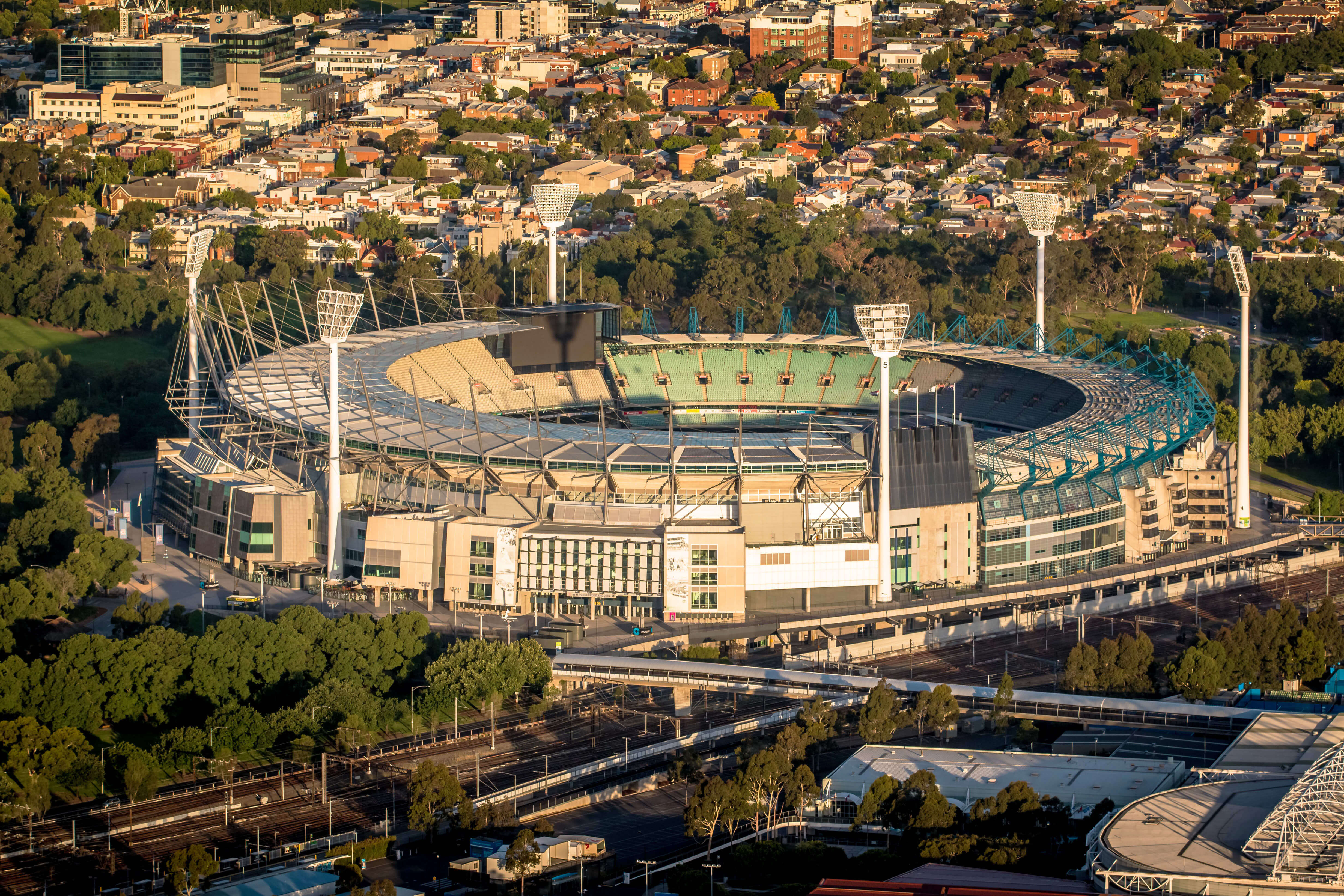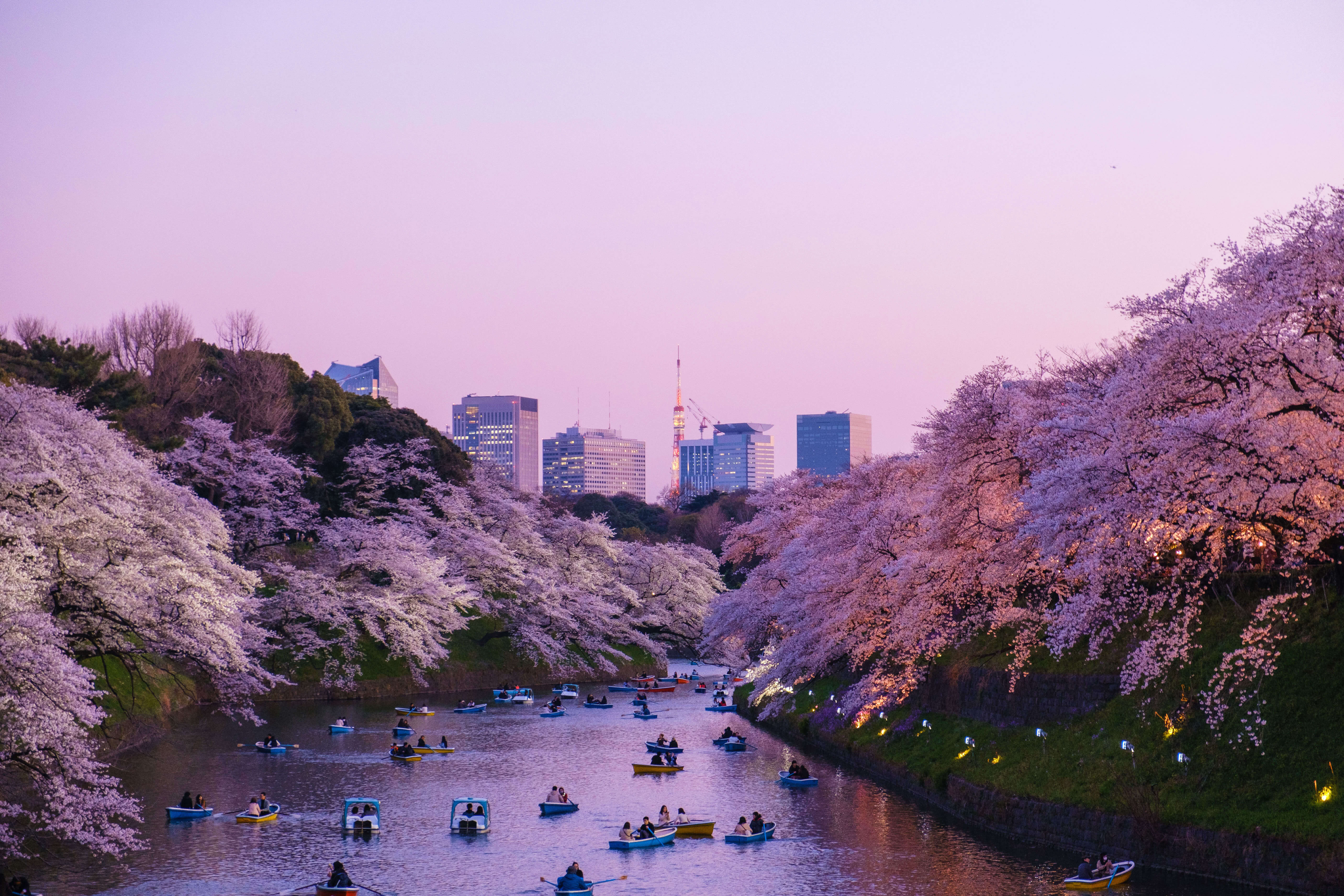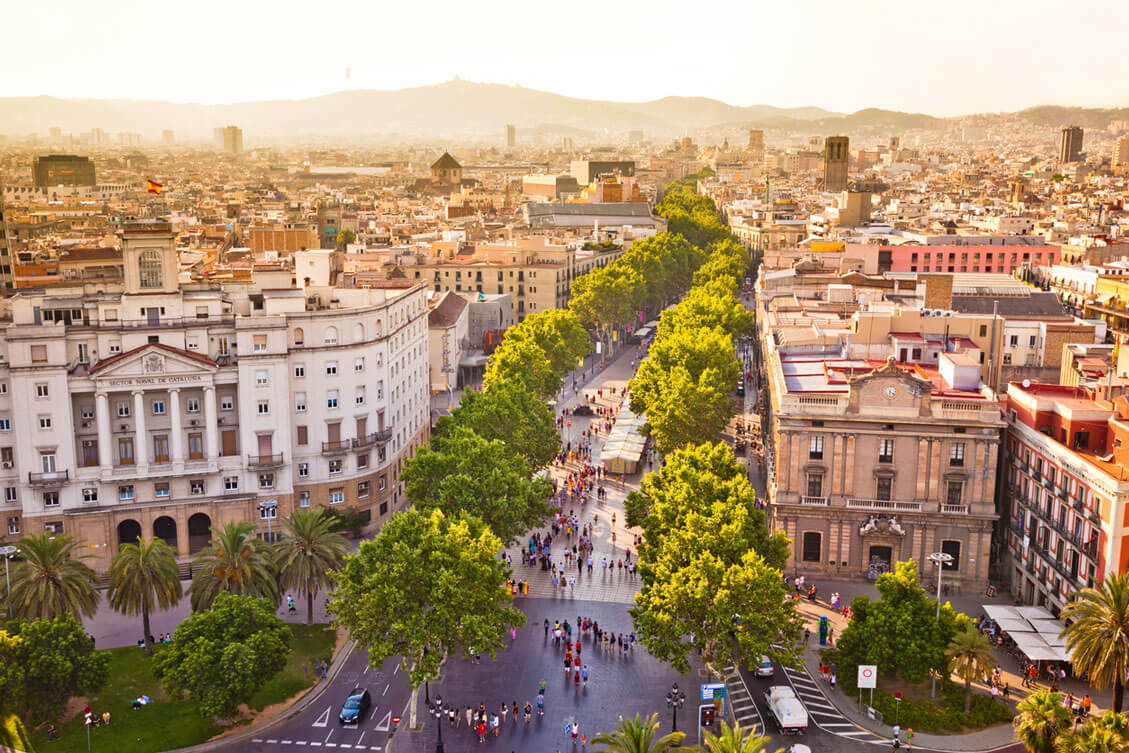1/1 Oops. Incorrect.
0%
0pts Earned
0/1correct
20/20
Which country’s name means “abundance of fish”?
Love seafood? You might want to plan a vacation to Panama. The Central American country’s name translates to “an abundance of fish,” which makes sense given Panama has coastlines on both the Pacific Ocean and the Caribbean Sea. The name is derived from the language of the Indigenous peoples of Panama, which has been inhabited for at least 10,000 years.
Source: Lonely PlanetBelize
17%
The Philippines
46%
Panama
24%
Japan
13%
19/20
What does Honolulu’s name mean?
Originally settled more than 2,000 years ago, Honolulu, on the island of Oahu, is the state capital of Hawaii. The city's name means “sheltered harbor” or “protected bay” in the Hawaiian language. The first European to arrive on Oahu was Englishman Captain William Brown in the late 18th century, and he dubbed the harbor Fair Haven. The Hawaiian name was introduced sometime after that.
Source: Hawaii GuidePeaceful shores
24%
Sacred city
6%
Homeland
7%
Sheltered harbor
62%
18/20
Why is New York City’s northernmost borough called the Bronx?
In 1639, Swedish-born Jonas Bronck purchased 500 acres of land (now part of New York City) and named it Bronck's Land. A large river, the Aquahung, passed through his land. When Bronck passed away four years later and new settlers took over, his name was almost erased from the land — except for the river, which was named Bronck’s River. That eventually became Bronx River, which is where the borough of the Bronx gets its name.
Source: Bowery Boys NYCA landowner named Jonas Bronck
48%
A Dutch town of the same name
28%
A Native American tribe
17%
A name given by King Charles II
7%
17/20
What does "Europe" mean in Greek?
The European continent’s name comes from Greek roots: “eurys” (wide) and “ops” (eye). Taken together, they mean “wide-gazing.” The name stems from the continent’s large coast, and some scholars believe “Europe” was used synonymously with “mainland.” While there are a few other theories about the origins and etymology of the name Europe, this is the most widely agreed upon theory among scholars.
Source: BritannicaLand of Euros
14%
Wide-gazing
25%
Broad shores
18%
Middle earth
42%
16/20
What Asian capital city’s name translates to "inside rivers"?
Hanoi is located on the banks of the Red River that flows from southwest China through northern Vietnam to the Gulf of Tonkin. Appropriately, its name, which was chosen in 1831, translates literally to “inside rivers.” According to legend, Vietnamese king Ly Thai To spotted a dragon soaring over the river, which is why he chose to build upon its river banks in the early 11th century.
Source: ForbesBeijing, China
16%
Bangkok, Thailand
39%
Jakarta, Indonesia
17%
Hanoi, Vietnam
29%
15/20
Saint Lucia is the only country to be named after what?
Of the 195 sovereign countries in the world, only one, Saint Lucia, is named after a woman. The island country in the West Indies in the eastern Caribbean Sea, was named after Saint Lucy of Syracuse, a Christian martyr from Sicily who died during the Diocletianic Persecution in 304 CE. Saint Lucia covers just 238 square miles, making it one of the world’s smallest countries.
Source: World AtlasA woman
68%
A saint
26%
A mythical figure
4%
A colonizer
1%
14/20
What island nation was named for its resemblance to an eel?
It might not be the first thing you think of when you see it on a map, but Anguilla’s long, slender shape inspired the island’s name. The name comes from the French word “anguille,” meaning eel. Before that, Indigenous peoples who populated the island thousands of years ago called it Malliouhana, which means “arrow-shape sea serpent.” Anguilla is a British Overseas Territory in the eastern Caribbean Sea.
Source: BritannicaAnguilla
67%
Sri Lanka
16%
Cyprus
7%
Jamaica
10%
13/20
What was the original name of Paris?
The Roman city of Lutetia was the predecessor of modern-day Paris. The Romans conquered the area in 52 BCE and began their settlement on an island in the middle of the Seine River. (Lutetia is Latin for “midwater dwelling.”) The prosperous settlement soon spread to both banks of the river and was later renamed Paris, after its early inhabitants, a Gallic tribe known as the Parisii.
Source: History.comGaul
45%
Lutetia
29%
Saxony
21%
Antioch
4%
12/20
What does Tokyo mean in English?
Now the world's most populated metropolis, Tokyo was formerly known as Edo (meaning “bay entrance” or “estuary”). However, Edo did not become a bustling city and Japanese capital until the end of the Tokugawa period in 1868. The city was then renamed Tokyo, meaning “eastern capital,” reflecting its location east of the former imperial capital, Kyoto.
Source: BritannicaGood fortune
28%
Eastern capital
36%
Snowy mountain
15%
City on the bay
22%
11/20
Argentina is named after what precious substance?
The Argentine capital of Buenos Aires sits beside the Rio de la Plata, which translates to “River of Silver.” In 1554, a Portuguese explorer marked the area surrounding the river on a map with the name “Terra Argenta,” or “Land of Silver.” Derived from the Latin word for silver, argentum, the name stuck when Argentina wrote its own constitution and became an independent nation in 1826.
Source: The Culture TripPlatinum
10%
Silver
69%
Titanium
10%
Diamonds
10%
10/20
What city’s name means “steamy bay,” thanks to its geothermal activity?
The name of Iceland’s capital translates literally to “steamy bay” or “smoky bay” in Old Norse. The Vikings would have seen the steam that rises from the hot springs of the Laugardalur Valley, east of downtown Reykjavík, when they chose the name. Steam is in abundant supply in Reykjavík: More than half of the hot water pouring from city taps is pure, unfiltered geothermal water that comes straight from the ground.
Source: Iceland MagazineNaples, Italy
1%
Honolulu, Hawaii
6%
Reykjavík, Iceland
87%
Quito, Ecuador
5%
9/20
What does "Dakota" mean in the Sioux language?
In 1861, the United States established the Dakota Territory — an area of land that later became the states of North Dakota, South Dakota, Montana, and Wyoming. It was named after the Dakota tribe, a branch of the Sioux Native Americans, who lived in the area. The name translates to “friend” or “ally” in the Dakota language.
Source: State Symbols USAFriend
56%
Horse
8%
Prairie
32%
River
4%
8/20
What country name is Latin for "Sunday"?
Christopher Columbus first arrived in what is now the Caribbean island nation of Dominica on Sunday, November 3, 1493. So when it came to a name, he simply drew inspiration from this divine day of the week. In Latin, “Dominica” translates to “Sunday.” Of course, the island had a name long before Columbus arrived — the native Kalinago people called their island Wai’tu kubuli, which means “tall is her body.”
Source: Far & WideMacedonia
7%
Nigeria
2%
Dominica
88%
Canada
2%
7/20
Which island group was once called the Sandwich Islands?
When Captain James Cook arrived in Hawaii in 1778, the British explorer named the islands in honor of the Earl of Sandwich, John Montagu, who sponsored his exploration. (And, yes, , the beloved, edible sandwich was indeed also named after him.) The name stuck until the 1840s, when its local name, Hawaii, began to take prominence under local rule.
Source: History.infoThe Philippines
9%
Canary Islands
26%
Hawaii
58%
The Bahamas
8%
6/20
Which U.S. state capital is named after a legendary Greek mountain?
The Olympic Mountains in Washington state gave the nearby capital of Olympia its name, but they themselves were named after Mount Olympus in Greece, the legendary home of the Greek gods. Explorer John Meares coined the name when he said of the range’s highest peak in 1788, “If that be not the home where dwell the Gods, it is beautiful enough to be, and I, therefore, call it Mount Olympus.”
Source: Mental FlossNorth Dakota
19%
Washington
54%
Maine
19%
Nevada
7%
5/20
What was the city of Montreal named after?
In 1535, Frenchman Jacques Cartier arrived on an island originally inhabited by St. Lawrence Iroquoians, where the Canadian city of Montreal (in the province of Quebec) is located today. He climbed the mountain in the middle of the island and proclaimed it “Mont-Royal,” which means Royal Mountain in French. The name eventually evolved into Montréal, based on the 16th-century French word “réal,” also meaning royal.
Source: The Culture TripA city in France
31%
A royal palace
16%
A mountain
46%
A river
7%
4/20
Which state's name means "Great River" in the Ojibwe language?
The root of the word Mississippi begins with “Messipi” — a French interpretation of the Native American Anishinaabe term “Misi-ziibi,” which translates to “Great River.” This 2,348-mile-long river is the second-longest on the North American continent, after the Missouri River. It starts in northern Minnesota and flows through 10 states before emptying into the Gulf of Mexico in Louisiana.
Source: State Symbols USAMassachusetts
4%
Louisiana
7%
Mississippi
86%
Idaho
2%
3/20
Where did the name "District of Columbia" come from?
In September 1791, America’s new capital was named in honor of President George Washington, who chose the site. Federal commissioners called the district in which it was located the Territory of Columbia (which later became the District of Columbia). The name Columbia was derived from explorer Christopher Columbus; during the American Revolution, patriots used the name as a reference for the United States.
Source: History.comThe country of Colombia
3%
The city of Columbia, U.K.
14%
Explorer Christopher Columbus
77%
Columbia University
6%
2/20
What does "Nevada" mean in Spanish?
Even though Nevada is one of the most arid of the 50 states, its name comes from a Spanish word meaning “snow-covered.” It was named for the mountain peaks on the state's western border, the Sierra Nevadas, which divide the state from California. When Spanish explorers first reached the area, they named the Sierra Nevadas after a mountain range of the same name in Spain.
Source: State Symbols USASnow-covered
38%
Desert
20%
Mirage
6%
Red rocks
37%
1/20
What European capital was New York City originally named after?
In the 17th century, New Amsterdam was an up-and-coming city on the southern tip of the island of Manhattan in the Dutch colony of New Netherland. But in 1664, an English naval squadron led by Colonel Richard Nicolls invaded the city, and Dutch Governor Peter Stuyvesant surrendered control to the British, who changed the name to New York after the Duke of York, who funded the mission.
Source: History.comLondon
9%
Amsterdam
87%
Paris
3%
Dublin
1%
Play Quizzes By Category
Play A Trending Quiz
Trending, related and recent quizzes you may be interested in






